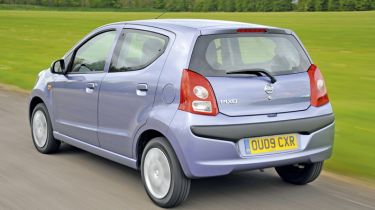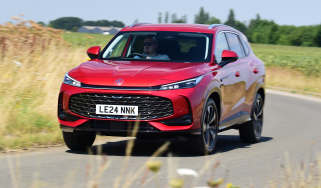Nissan Pixo
Hatchback takes Japanese brand into uncharted territory
City cars come with small price tags – and even tinier profit margins. That explains why makers are so keen to split development costs, but this approach always calls for compromises.
The Pixo is a perfect example, because it looks like its Suzuki Alto cousin with a Nissan Note grille grafted on the front.
The upright hatchback isn’t unattractive, but it’s not as striking as its sister car or as pretty as its Peugeot rival here. You don’t have to look too hard to see evidence of its low-cost Indian production, either, as our test car featured the kind of uneven panel gaps that were commonplace 30 years ago.
The signs are visible on the inside, too, although we’ve no complaints about build quality. Instead, the Nissan betrays its bargain tag with dated design and low-rent, unappealing plastics. This is par for the course on budget models, but the Peugeot, in contrast, is stylish inside and features swathes of tactile material in key places.
When it comes to space, the newcomer is hard to fault. Rear legroom is comparable with that of the 107 and the 129-litre boot is only 10 litres down. But where it really scores is on standard kit, because in range-topping Tekna trim its tally includes both air-con and stability control – each of which are extra on the more costly 107.
Used - available now

2020 BMW
4 Series
69,900 milesAutomaticDiesel3.0L
Cash £17,500
2023 Vauxhall
Mokka
19,307 milesManualPetrol1.2L
Cash £13,497
2021 Renault
Arkana
53,901 milesAutomaticPetrol1.6L
Cash £13,197
2023 Volkswagen
T-Cross
58,607 milesAutomaticPetrol1.0L
Cash £14,197It’s harder to split the cars under the bonnet. With 1.0-litre three-cylinder engines, their power and CO2 outputs are nearly identical. The sole major difference is in torque: with 90Nm of thrust, the Pixo enjoys a 20Nm advantage over its rival.
Strange, then, that the Nissan was slower against the stopwatch at the test track. It took 12.9 seconds to accelerate from 0-60mph – eight-tenths longer than the Peugeot – and the lighter 107 was also more responsive in our in-gear tests. Hit the road and you’re unlikely to notice the shortfall, as both cars need to be worked extremely hard to keep up with surrounding traffic.
The characterful thrum of the Nissan’s three-cylinder unit makes this surprisingly rewarding, but comfort is compromised by firm damping. Body movement is more controlled than in the 107, yet the Pixo’s steering lacks the precision of its French opponent.
Most startling of all is the newcomer’s braking performance. It put in a poor showing, requiring 61 metres to stop from 70mph. That’s exactly nine metres – or two-and-a-half car lengths – more than the Peugeot. It mars an otherwise strong safety showing, including six airbags and ESP as standard.
At £8,645, the Tekna is well equipped and has predictably low running costs, but it lacks one priceless city car commodity: charm.
Details
Chart position: 2
WHY: The Pixo is cheap – as it’s built in Delhi, India – while in range-topping Tekna guise, it comes very well equipped.



